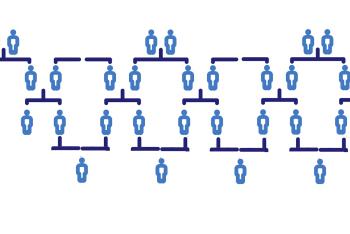For 81-year-old artist Bonnie Flanagan, an overall assessment of her health, which included a self...
Read More

Breast cancer symptoms are sneaky. Some people may notice a breast lump, while others won’t have any symptoms at all. Though symptoms vary from person to person, one thing is certain: The earlier breast cancer is detected and diagnosed, the easier it is to treat. Here’s an overview of the different types of breast cancer and what steps you should take if you notice early warning signs.
Breast cancers fall into two categories: Noninvasive (in situ) and invasive (infiltrating).
“Breast cancer usually starts in one of the two main areas of the breast—the lobules or the ducts,” said Nandini Kulkarni, M.D., Surgical Oncologist and Director of Inspira’s Breast Cancer Program. “If abnormal cells stay within the lobule or the duct, it’s noninvasive. If they invade the lobule or the duct, it’s invasive.”
The most common noninvasive breast cancers are ductal carcinoma in situ (DCIS), abnormal cells in the milk ducts, and lobular carcinoma in situ (LCIS), abnormal cells in the milk glands. Noninvasive breast cancer may cause symptoms such as an abnormal breast lump or changes in breast appearance, but most often present with no symptoms at all.
Invasive breast cancer is an umbrella term that encompasses several types of breast cancers.
“Breast cancer spreads when cancer cells enter the bloodstream or lymph nodes and break into surrounding tissues, lymph nodes and potentially other organs such as the liver, lungs, brain or bones. We don’t know why these invasive breast cancers develop, but we do know that genetics, family history, age and lifestyle factors like alcohol consumption, being overweight and lack of physical activity increase your risk,” said Dr. Kulkarni.
Common invasive breast cancers include invasive ductal carcinoma (IDC), which spreads from the milk ducts, and invasive lobular carcinoma (ILC), which spreads from the milk glands. IDC and ILC present with characteristic breast cancer symptoms such as:
Less common manifestations of invasive breast cancers include:
If you notice any of these early signs of breast cancer, don’t panic. Just be sure to take the appropriate steps. Call your primary care provider or OB/GYN, and explain your concerns. Be sure to monitor your symptoms until you are able to see your provider, and go to your visit prepared with a list of questions, concerns and family history.
Currently, the American Cancer Society (ACS) recommends:
“Getting a mammogram may be uncomfortable, but it gives you the opportunity to catch early warning signs before they can be detected by hand,” said Dr. Kulkarni. “Just remember that the benefits of knowing the status of your health greatly outweigh the risks of delayed care.”
For more information on breast cancer screenings at Inspira, click here.
Schedule your routine mammograms per ACS guidance based on your age.

For 81-year-old artist Bonnie Flanagan, an overall assessment of her health, which included a self...
Read More
Uncover the hidden connections between your family's past and your future well-being as we delve...
Read More
Treating cancer requires an arsenal of tools and preventive measures. Explore the power of...
Read More
The material set forth in this site in no way seeks to diagnose or treat illness or to serve as a substitute for professional medical care. Please speak with your health care provider if you have a health concern or if you are considering adopting any exercise program or dietary guidelines. For permission to reprint any portion of this website or to be removed from a notification list, please contact us at (856) 537-6772